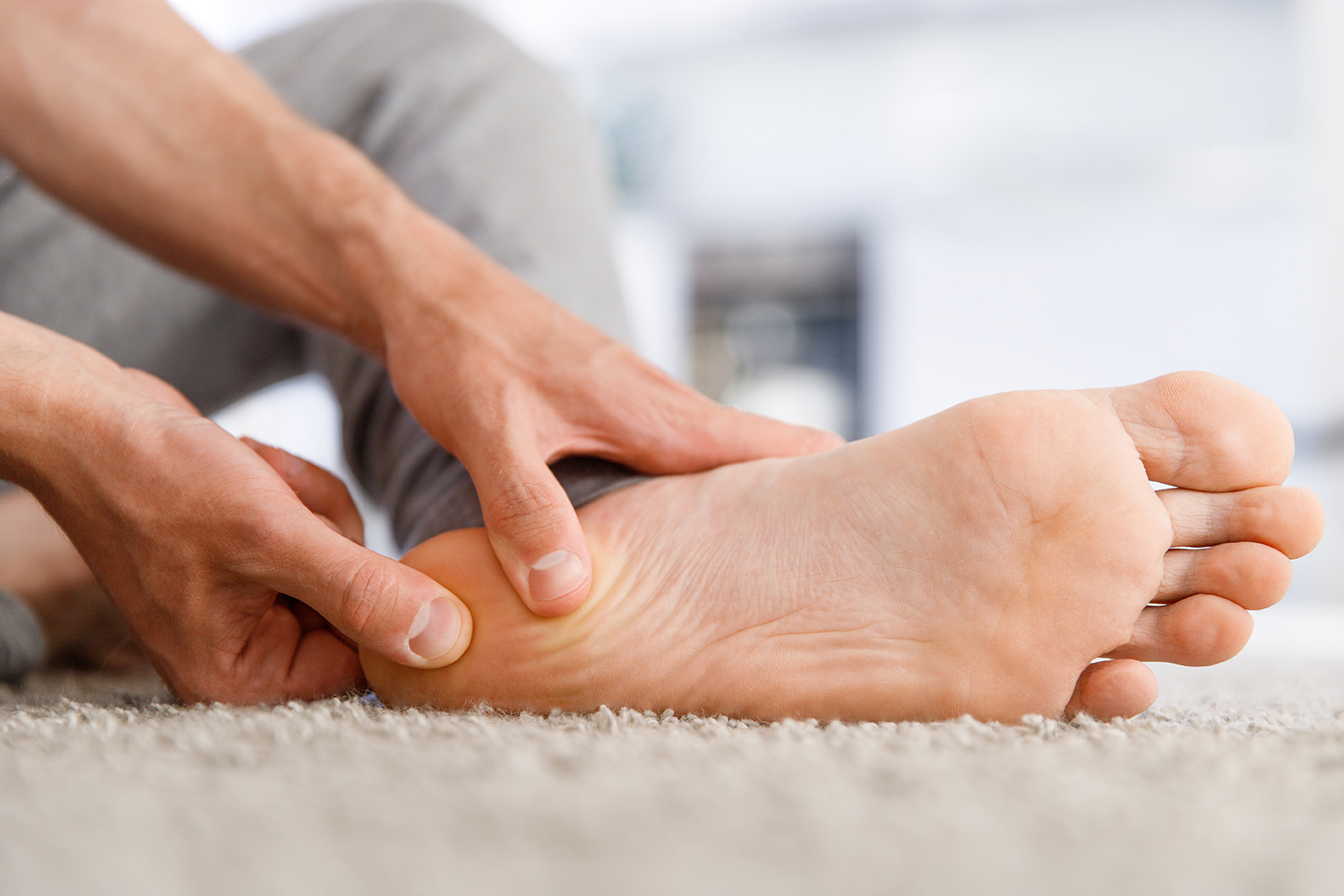
Plantar Fasciitis – The Plantar Heel Pain
In recent months I have seen some changes to the numbers of certain conditions which are normally referred to the clinic. This month I’ve treated numerous incidences of Plantar Fasciitis which may be due to the increase in number of people running and exercising since lockdown began.
Plantar Fasciitis refers generally to inflammation of the sole of the foot, though this is not quite the case and is why treatments of ice and anti inflammatory may not always work. It is suggested that this is a problem of degeneration of tissue caused by overloading rather that purely inflammation and is possibly better deserving of the name Plantar Heel Pain. Although it is not always clear why degeneration takes place, it is likely that this pain is caused by sudden changes such as an increase in running or exercise volume, excessive standing during the day, being significantly over weight or having limited Dorsiflexion in the ankle joint. Also excessive changes in footwear may be an influencing factor.
Treatment:
Stage One – Symptom Reduction
The best strategy is often to try a range of treatments to find which best helps you, but in particular the avoidance of the exacerbating activities until symptoms start reducing. It is always better to reduce the symptoms sooner than trying to battle through.
Do’s….
- Reducing symptoms is extremely important before the return to activity.
- Tape
- Gel heel pads
- Orthoses
Don’ts….
- Excessive running/jumping
- Wear old flat shoes or walk barefoot
- Stand for long periods
Stage Two – Strengthening
Once symptoms start to reduce and become more manageable, the second stage can start. Often people rush and try to return to pre injury activity levels too quickly. Instead, once symptoms have calmed down, we need to build tissue tolerance back ie: strength training. Modern studies treat PHP similar to rehabilitating tendon injuries, using progressive loading over time; in this case calf/heel raises.
Calf/heel raises
Going on to tip toes is one of the best ways to target the tissue which needs strengthening. For gains to occur, the exercise needs to use sufficient weight to cause the tissue to reach failure point. So instead of doing 20 plus repetitions, you need to exercise with sufficient weight which only allows you to achieve 8 to 12 repetitions by which time you can physically do no more. During this any pain should ideally be less than a 3/10. If the pain is more than 3/10, the additional
weight should be reduced or it may indicate that you are not quite ready to work at this level.
Stretches
Research does support stretching once the symptoms have settled down. Forcing a stretch during the symptom reduction phase can actually irritate the fascia causing further delay in the recovery process. To stretch effectively, you should place your foot on the opposite one and with one hand, hold the heel and with the other pull the big toe back. You should hold the stretch forn 30 seconds whilst feeling a stretch through the inner arch of the foot. You can repeat this a few
times a day, but in conjunction with strengthening.
Return to running and exercise
As the pain and symptoms settle and subside you may wish to start activity again. As with any return to sport, you need to make sure you have a slow and gradual return. PHP is linked to doing too much too soon, so avoid repeating this error. Temporary moments of mild pain can be normal however this should not be ignored. Try changing or modifying the surface you exercise on. If you are running or power walking then alter the pace. Consider also using a shoe with a more
cushioned sole or higher heel to toe drop. Minimalist shoes can cause an increase load on the calf, Achilles tendon and plantar fascia so it might be better not to wear them. Old shoes or those washed and dried on the radiator or tumble drier can have heat damage to their sole destroying their sock absorption properties. It is also worth keeping a variety of running shoes in your wardrobe so you are not relying on the same pair all the time.
If you would prefer to come into the clinic for support and guidance – don’t hesitate to contact me.